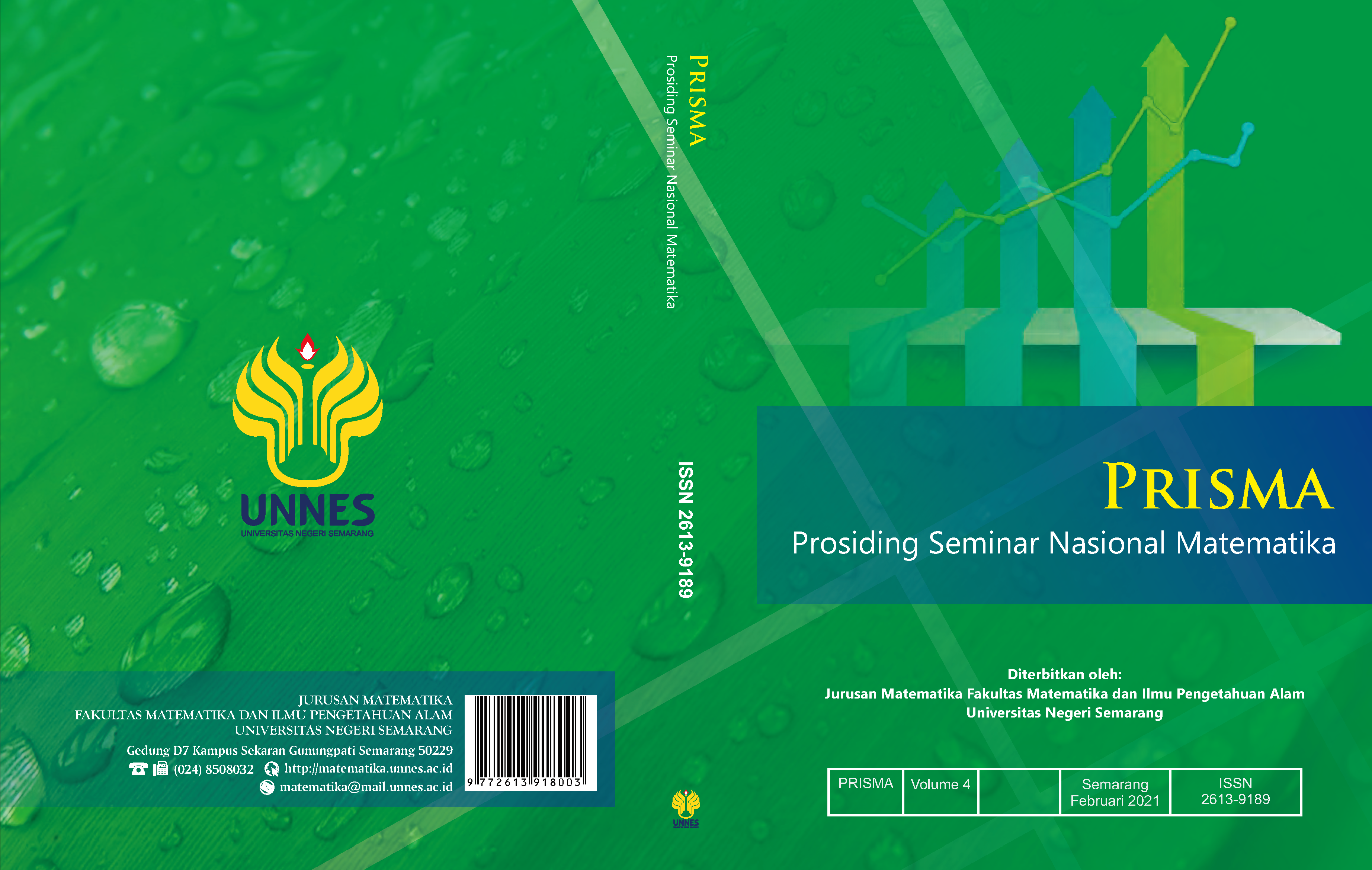Analisis Model Predator-Prey dengan Protection Zone Menggunakan Fungsi Respon Holling Tipe II
Main Article Content
Abstract
Fungsi respon adalah hubungan antara tingkat konsumsi pemangsa dan kepadatan populasi mangsanya. Artikel ini membahas tentang model predator-prey dengan fungsi respon Holling tipe II dan zona perlindungan bagi prey. Zona perlindungan adalah zona yang ditempati oleh prey namun predator tidak dapat memasukinya, sedangkan prey dengan bebas keluar-masuk zona tersebut. Hasil penelitian ini adalah model matematika predator-prey dengan protection zone menggunakan fungsi respon Holling tipe II yang memiliki enam titik kesetimbangan yaitu E1, E2, E3, E4, E5, dan E6. Model matematika ini memiliki tiga titik kesetimbangan non-negatif; titik E1 = (0,0,0) merupakan titik saddle; titik E2, E3, dan E4 bersifat tidak stabil; dan titik E5 dan E6 akan bersifat stabil jika memenuhi syarat kestabilan dari masing-masing titik.
Article Details
References
Andari, A. (2017). Aljabar Linear Elementer. Malang: Universitas Brawijaya Press.
Ashine, A. B. & Gebru, D. M. (2017). Mathematical Modeling of a Predator-Prey Model with Modified Leslie-Gower and Holling-type II Schemes. Global Journal of Science Frontier Research: F Mathematics and Desicion Sciences, 17(3).
Cui, R., Shi, J., & Wu, B. (2014). Strong Allee Effect In A Diffusive Predator-Prey System With A Protection Zone. Journal od Differential Equations, 256, 108-129.
Dubey, B. (2007). A Prey-Predator Model with A Reserved Area. Nonlinear Analysis: Modeling and Control, 12(4), 479-494.
Hunsicker, M. E. & Jhonson, D. W. (2011). Functional Ressponses and Scaling in Predator-Prey Interactions of Marine Fishes: Contemporary Issues and Emerging Concepts. Ecology Letters, 14, 1288-1299.
Jannah, Z. Z. (2016). Aplikasi Pemodelan Prey Predator terhadap Cash Flow Keuangan di Bank BRI Pamekasan. Zeta-Math Journal, 2(1).
Kusmaryanto, S. (2013). Matematika Teknik I. Malang: Universitas Brawijaya Press.
Murray, G. P. D., Stillman, R. A., Gozlan, R. E., & Britton, J. R. (2013). Experimental Predictions of The Functional Response of A Freshwater Fish. Ethology, 119, 751-761.
Naji, R. K., & Jawad, S. R. (2016). The Dynamics of Prey-Predator Model with A Reserved Zone. World Journal of Modelling and Simulation, 12(3), 175-188.
Nasir, A. M. (2018). Matematika Farmasi dan Ilmu-Ilmu Yang Sejenis. Jakarta Timur: Kencana.
Ndii, M. Z. (2018). Pemodelan Matematika Dinamika Populasi dan Penyebaran Penyakit Teori, Aplikasi, dan Numerik. Yogyakarta: Deepublish.
Ni’mah, K., Waluya, S. B., & Kharis, M. (2016). A Dynamic SIP Model with Disease in The Prey Population and Holling Type II Functional Response. Far East Journal of Mathematical Sciences, 100(5), 727.
Pal, A. K., & Samanta, G. P. (2010). Stability Analysis of an Eco-Epidemiological Model Incorporating a Prey Refuge. Nonlinear Analysis: Modelling and Control, 4, 473-491.
Swishchuk, A., & Wu, J. (2013). Evolution of Biological Systems in Random media: Limit Theorems and Stability. Mathematical Modelling, 18.
Wang, S., Yu, H., Dai, C., & Zhao, M. (2020). The Dynamical Behavior of a Certain Predator-Prey System with Holling Type II Functional Response. Journal of Applied Mathematics and Physics, 8(03), 527.
Waluya, S. B. (2006). Diferensial Equation. Yogyakarta: Graha Ilmu.
